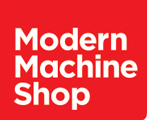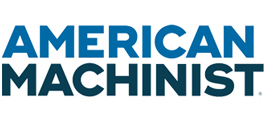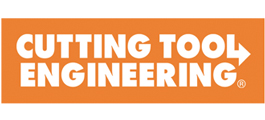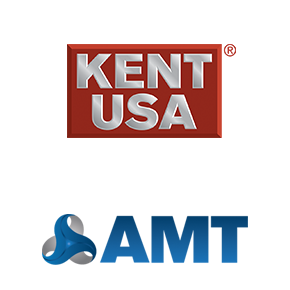Published Customer Success Stories
Published Case Studies
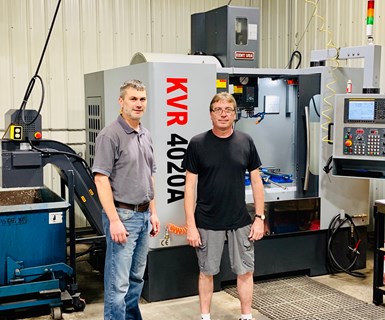 Journeyman Machine’s larger 50-taper machines were too slow for milling smaller parts with tapped holes, but a 40-taper KVR 4020A vertical machining center from Kent USA reduced cycle time by 30%.
Journeyman Machine’s larger 50-taper machines were too slow for milling smaller parts with tapped holes, but a 40-taper KVR 4020A vertical machining center from Kent USA reduced cycle time by 30%.
Every shop faces the same situation at one point or another: Their machine tools are either too large and slow to be competitive on smaller parts, or too small and underpowered for the larger parts. This was the case at Journeyman Machine and Supply Co. Inc. when shop supervisor Andy Hass and the company’s owners agreed that it was time to think small.
“In the past, we’ve always traded in our old machines and replaced them with new ones of comparable size and capabilities,” Mr. Hass says. “This time, though, we felt it made more sense to invest in a smaller, faster machine. The rapid travels and tool changes on our large 50-taper machines were just way too slow for machining retainer plates, clips and various other parts with small tapped holes.” The company ultimately settled on a 40-taper machine from Kent USA that provided higher spindle speeds and through-spindle coolant supply.
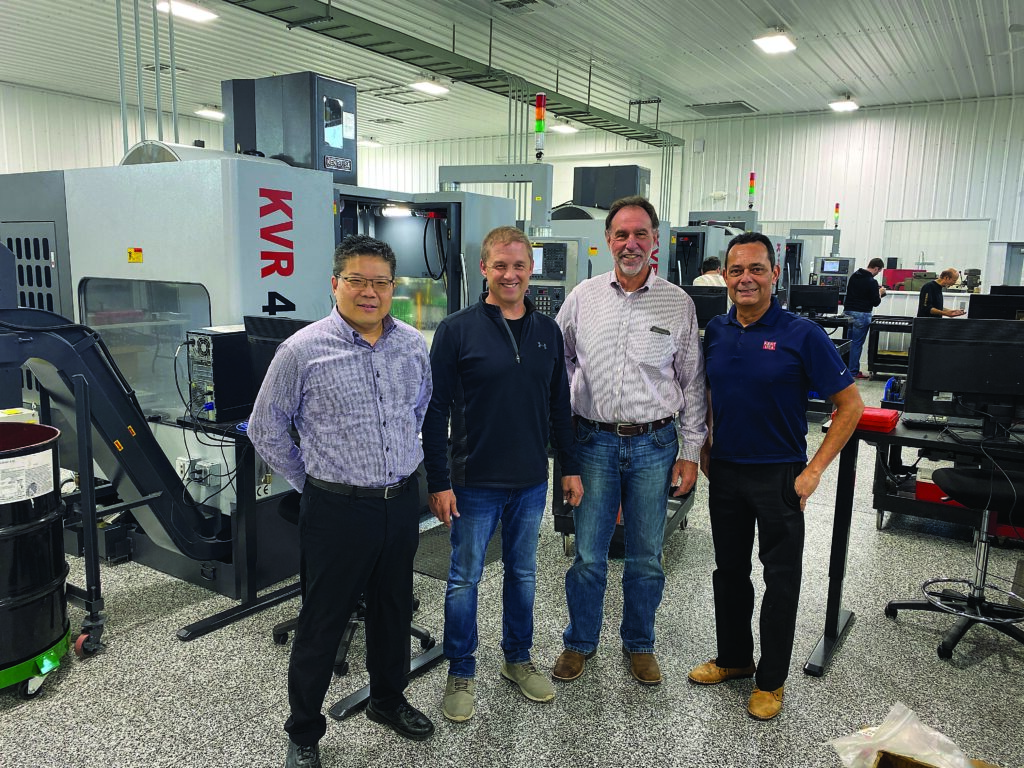
Machine shops are like families and communities. When tragedy strikes, everyone pulls together, picks up the pieces and starts putting lives and livelihoods back together. This was the case in August 2018 for T.D.C. Engineering Inc. in Campbellsport, Wisconsin, when an EF1 tornado, which has wind speeds from 138 to 177 kph (86 to 110 mph), that was the width of a football field ripped through the shop. Eighteen additional tornadoes hit the state the same day.
Luckily for owner Tim Grahl and his 10 employees, all but one of them had gone home for the day, and the remaining worker was able to shelter in the bathroom — the only part of the building left standing. T.D.C. Engineering’s lathes, wire and sinker electrical discharge machines, surface grinders, tooling, fixtures and six machining centers were all gone. Two small machines initially were considered salvageable, but he said they ultimately were scrapped along with the rest.
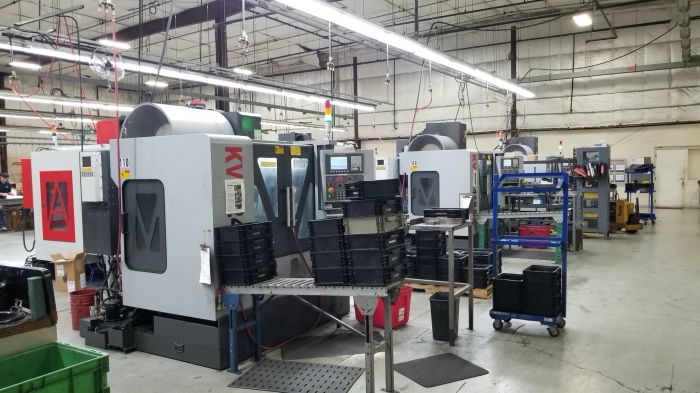
Being a Tier 3 supplier to automotive and appliance OEMs is high-volume, extremely competitive work, where success depends in large part on fast, accurate and above all dependable equipment. Fortunately for Bill Overbay, manufacturing supervisor at Miyama USA Inc., Louisville, Kentucky, his latest round of machine tool purchasing gave him exactly that. “We now have five Kent USA machining centers in all, and most have been running nonstop for the past four years,” he said. “We’ve had no problems whatsoever.”
Miyama USA is a wholly owned subsidiary of Miyama Kogyo Co. Ltd. in Japan. Since 1980, it has served a variety of automotive and appliance customers here in the US, with capabilities that include stamping, machining, robotic welding, assembly, and other value-added services. The company and its 50 employees pride themselves on 100% on-time delivery and unerring quality, both necessary attributes in an environment where business is decided on margins of pennies per part.

After years of dealing with equipment breakdowns and repairs, this shop owner decided an upgrade to new machine tools would allow him to focus on making parts instead.
Dean Kauffman makes rollers. He makes them by the thousands—big rollers, small rollers, all used by steel mills to make the round, square and rectangular barstock that other manufacturers then turn into something else. Mr. Kauffman likes to think of these mills as giant Play-Doh Fun factories, squeezing red hot steel through a progressively smaller series of funnels and rollers until they reach their final shape. The rollers, however, are anything but fun to machine, made of hardened D2 tool steel and accurate to within ± 0.0005 inch.
Here’s where the equipment selection has made a significant difference. Mr. Kauffman purchased a KLR-20 CNC lathe from Kent USA a year ago that eased many of the machining challenges he had been dealing with. He says, aside from marrying his wife, the purchase was probably the best decision he’s ever made.

As a manufacturer of high-power microwave transmission equipment since 1989, Mega Industries LLC specializes in high-quality components for the scientific, commercial and military sectors. Its machine shop includes welders, grinders, testing and finishing equipment, and a team of experienced people to run it all. In fact, one of the key pieces of equipment used to produce the high-tech components and machinery needed to support the company’s diverse customer base is a CNC machine tool found in other shops across North America — a 10,000-rpm, 15-hp, 24-tool KVR-4020A vertical machining center from Kent USA.
According to Walter Wunderlich, executive vice president for special projects, management at Mega Industries decided to purchase the new machining center two years ago. The reason was simple: One of its old machines was “tired,” and it was time for an upgrade, he says.
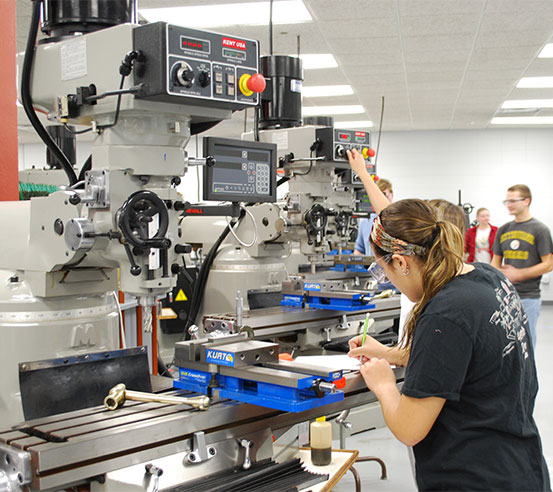
Why do designers and mechanical engineers need experience operating a manual mill, lathe or surface grinder? A similar question might be asked about CNC machinists: who cares about all that handle cranking and lever turning when practically all machining these days is under computer and servomotor control?
The answer to both questions is simple: because it makes them better at their jobs.
With the first group of people, a solid grasp of basic machining practices provides a better understanding of design for manufacturing principles, resulting in lower costs and more machinable products. As for machinists, they need to feel how a knee mill reacts as they plow a cutter through a chunk of steel, or watch the part deflect as they turn a long journal on an engine lathe. Without this first-hand experience, their chances of being truly effective on CNC versions of these same machine tools are less likely.
To Sean Falkowski, associate professor for the Department of Engineering Management, Systems, and Technology at the University of Dayton, this is all just so much preaching to the choir. He and other instructors at the university have taught the fundamentals of machining to thousands of engineering students, many of whom have gone on to good-paying jobs at Makino, General Electric, Honda Motors, and other well-known manufacturing companies.
The machines they use to teach those skills? Manual knee mills, engine lathes, and surface grinders from Kent USA in Tustin, Calif.
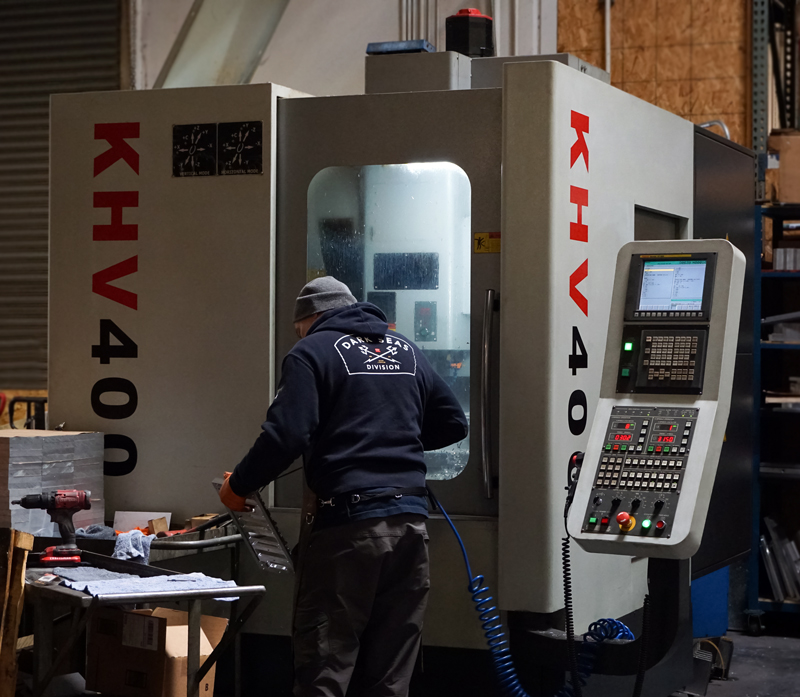
Vertical machining center (VMC) proponents say it’s the flexibility and lower cost that brought them to purchase this most common of CNC machine tools. Those who favor a horizontal machining center (HMC) suggest that better chip flow, higher rigidity, and access to more sides of the workpiece are what made them fans. Thanks to a recent equipment investment, Paul Cavallo, owner of American Made Group Inc. in Rancho Cucamonga California, has all of the above in a single machine.
“The nice thing about it is that you get the best of both worlds,” he said. “If a job comes in and my horizontal is tied up, I can use the Kent USA. The same goes for any vertical work that comes in. It’s just an extremely versatile piece of equipment, one that performs quite well for a variety of different parts and industries.”
Advice from a buddy – Cavallo is describing the KHV-400 combination universal horizontal/vertical machining center he purchased from Kent USA late last year at the urging of a friend, who services CNC machinery. “He used to work for Kent USA, and was always telling me, ‘Paul, you’ve got to check them out. They’re great machines.’ He was right. I’ve owned a lot of machine tools over the years, and construction-wise, I’d say that the KHV is better than 90% of what’s out there today.”
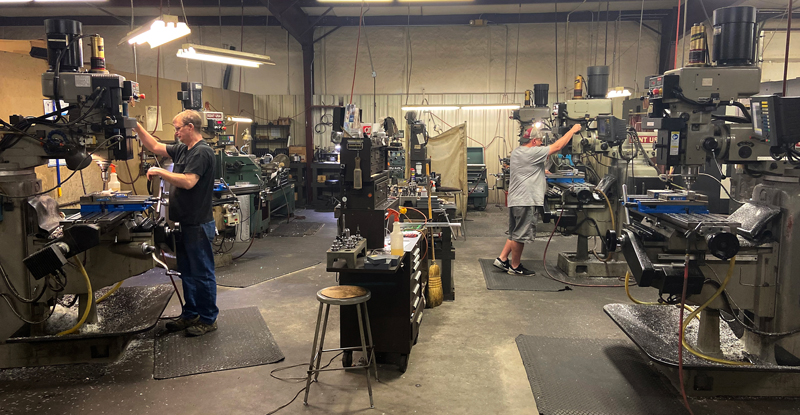
“Despite the widespread adoption of CNC machine tools over the past few decades, some shops remain on the fence, preferring manual equipment instead,” said a Kent Industrial USA spokesperson. “The reasons for this vary, but the most valid of them is that production quantities do not support the significantly larger investment in tooling, education and especially the machine tool itself. And while one might argue that a CNC lathe or machining center equipped with quick-change tooling and supported by offline presetting and CAM programming systems can actually compete quite effectively on ‘onesie-twosie’ work, reaching that bar admittedly takes substantial effort.”
The challenges of managing an all-manual machine shop, however, are twofold. The first is capability. Machining relatively simple shafts and brackets is a no-brainer on a manual machine, but what happens when the customer’s part designs grow more complex? What about 3D surfaces, non-orthogonal geometries, engraving and large or deep pockets, where the ability to remove massive amounts of material quickly and accurately is the difference between profit and loss?
The second is flexibility. While a seasoned machinist can bust out prototypes and handfuls of parts as quickly as the average CNC, the scales begin to tip as quantities rise. Are you going to turn away the work when prototypes move into production? This last statement brings up another objection to the purely manual approach, and that is the seasoned machinist needed to operate knee mills and engine lathes. Where does a shop owner or production manager find such people?
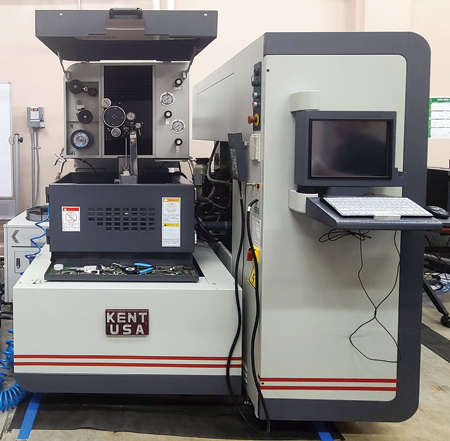
Wire electrical discharge machines (EDMs) are most often associated with precision tool and die machining, but it is important to note that this crucial manufacturing technology has numerous other applications besides trim dies, blanking punches and jig boring quality hole finishing. At the University of North Texas (UNT) in Denton, for example, researchers are using wire EDM to support their investigations into the metallurgical properties of several relatively novel machining and fabricating processes, 3D printing among them.
The machine? A WSi-200 Wire-Cut Submerge Type EDM from Tustin, CA-based machine tool company Kent USA.
“We primarily use the machine to cut material samples for testing and to slice 3D-printed parts off build plates,” said Supreeth Gaddam, a graduate research assistant who is working on his doctorate and is currently in his fourth year of study. He explained that his primary area of interest is friction stir processing, but added that the lab in which the WSi-200 is situated—the Advanced Materials and Manufacturing Processes Institute (AMMPI)—delves deeply into materials science and various manufacturing technologies.
AMMPI is led by Gaddam’s boss, Principal Investigator and Professor Rajiv S. Mishra. It is part of UNT’s Department of Materials Science and Engineering, which also houses the Center for Agile and Adaptive Additive Manufacturing (CAAAM). According to UNT, Discovery Park—the home for these two research facilities—features nearly 300 acres of space dedicated to the sciences, technology and engineering and is the region’s largest research park.
Estudios de Casos Publicados en Español
Como Aparece En


Los talleres de manufactura se enfrentan a la misma situación en algún momento: las máquinas herramienta se vuelven demasiado grandes y van dejando de ser competitivas. Este fue el caso que experimentó la empresa manufacturera Journeyman Machine and Supply, a unas dos millas al suroeste del lago Winnebago, en Fond du Lac, Wisconsin (Estados Unidos), cuando el supervisor del taller y los dueños de la compañía acordaron que era hora de pensar en una escala más pequeña.
En 1976, Mike Lambeseder decidió abrir un pequeño taller de fabricación de piezas de repuesto para la industria ferroviaria y reparación de equipos para los granjeron locales, en 1976, gradualmente fue asumiendo creciente cantidad de trabajo de producción hasta el día en que Lambeseder se retiró y vendió el negocio a su actual dueño y presidente, Jason Davies.
Davies Junto a Ken Wagner (copropietario), han continuado construyendo el negocio hasta alcanzar la capacidad actual de 19 empleados, 10.500 pies cuadrados. Actualmente, Journeyman Machine produce una mezcla ecléctica de piezas prototipo y de bajo volumen, accesorios y herramientas para la industria naval, fabricantes de máquinas herramienta, clientes de la industria de alimentos y bebidas, y fabricantes de maquinaria personalizada.

La empresa Miyama USA Inc., subsidiaria de la firma japonesa Miyama Kogyo Co. Ltd., que presta sus servicios de manufactura nivel III al sector automotor y al electrodomésticos enfrentó hace cuatro años el gran reto de la renovación de máquinas herramienta para trabajo de alto volumen tras obtener un contrato a largo plazo para la fabricación de un engranaje de asiento de automóvil, eligiendo a Kent CNC como la marca que los llevara a cumplir la meta de esta producción en masa.
Después de ganar la oferta, la labor de Bill Overbay, supervisor de fabricación de Miyama USA (ubicada en Louisville, Kentucky) y su equipo fue adquirir tres nuevos centros de mecanizado vertical CNC, ya que cada engranaje requería operaciones de semiacabado y acabado aburrido, por lo cual Overbay sabía que se necesitaría una máquina de 40 conos y así acomodar las cabezas de mandrinar ajustables, cada una de las cuales pesa cerca de cuatro libras.
Sin embargo, las cualidades de velocidad y la precisión no eran negociables. “Cuando eres un proveedor de nivel III, el precio por pieza lo es todo”, señaló Overbay. Bajo esa premisa, el ideal de la empresa era conseguir una máquina lo menos costosa posible y, a la vez, suficientemente rápida para las metas de tiempo de ciclo establecidas y “capaz de mantener consistentemente tolerancias de hasta 20 micras (0,0007″) en un par de agujeros”, como lo explicó el supervisor.

